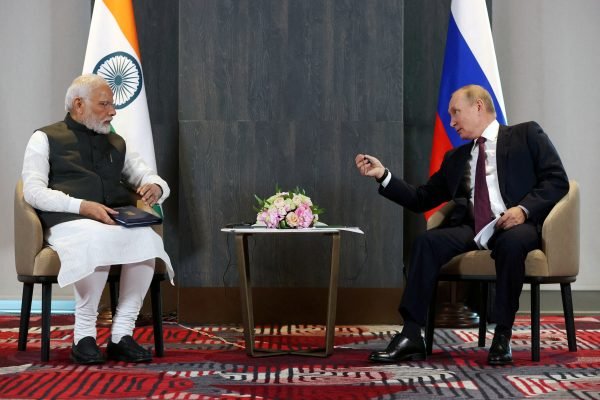India is strategically seeking to diversify its arms suppliers and reduce dependence on Russia, its largest arms supplier for the past two decades. The move comes as Russia’s ability to supply munitions and spares has been affected by its war in Ukraine. While India is turning towards the West, particularly the United States, it must navigate this shift carefully to avoid pushing Moscow closer to China.
Russia has traditionally supplied 65% of India’s weapons purchases, amounting to over $60 billion in the last two decades. However, the conflict in Ukraine has accelerated India’s efforts to diversify its weapons base. The goal is to reduce reliance on a single supplier and enhance ties with Western nations, aligning with the United States’ strategy to strengthen alliances in the Indo-Pacific region to counterbalance China.
“We are not likely to sign any major military deal with Russia. That would be a red line for Washington,” commented Nandan Unnikrishnan, a Russia expert at the Observer Research Foundation in New Delhi. Despite Moscow’s offers, including advanced helicopters and fighter jets for joint manufacturing in India, the country is shifting focus to domestic production with Western technology.
Prime Minister Narendra Modi’s emphasis on domestic manufacturing, aligned with the “Make in India” program, has led to efforts to enhance ties with the United States. Last year, India signed a deal with General Electric for the production of engines in India to power its fighter jets, marking a significant concession by the U.S. to a non-ally.
India’s growing ties with the United States are also driven by concerns over China, with both countries facing a longstanding border standoff in the Himalayan region. As India looks to spend nearly $100 billion on defense orders over the next decade, it seeks to diversify its suppliers and build partnerships that align with its strategic interests.
The challenge for India lies in maintaining a delicate balance with Russia, its largest arms supplier and a significant partner in energy trade. Cutting off arms deals with Russia could push Moscow closer to Beijing, which India aims to avoid. Arms purchases are considered a means to exert influence, and India seeks to maintain a level of engagement with Russia while diversifying its weapons procurement.
The ongoing conflict in Ukraine has raised concerns about Russia’s ability to provide spare parts and maintain existing military hardware in India. While Russia has publicly urged India to strengthen defense ties, Prime Minister Modi is focused on increasing domestic production with Western technology.
India’s multi-alignment strategy involves straddling ties with both Russia and the West, but the distribution may not be equal. The country is exploring partnerships with France for jets, submarines with European technology, and fighter jets with American and French engines.
Despite Russia’s push for more defense deals, India’s shift towards the West, and different suppliers is evident in its efforts to enhance ties with the United States and European nations. The evolving geopolitical landscape requires India to navigate complex dynamics, balancing its relationships with traditional partners and emerging alliances to safeguard its strategic interests in the Indo-Pacific region.














